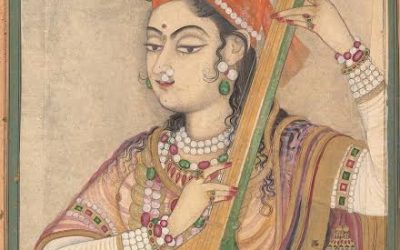The sound which can be used in the song and can be distinguished clearly from one another is identified as Shruti. To understand more clearly from this, suppose we first took a Naad (note) whose movement number (andolan sankhya) is 100 vibrations per second. Then we took another naad, whose movement number is 102 vibrations per second. From scientific point of view, these are two distinct sounds, but there is so little difference in their vibration numbers that even the ears of a skilled musician can hardly identify these two sounds differently. Now if we increase one, one vibration per second of the second naad respectively, then one condition will arise where these two sounds can be identified separately or both of these sounds can be heard separately. On this basis, the scholars have defined the Shruti that the sounds which can be distinguished and distinct from one another are called Shruti. According to a scholar, there are 22 numbers of naad that can be heard separately in one octave.
Comparison between Shruti and Swar
What can be heard is called Shruti. The difference between the swar and the Shruti is as much as the serpent and snake coil. That means, from this 22 shruti, which are used in Raga, are called swar. When any other raga is performed in addition to these swar, other shruti are taken into work, then those who have come to work now become swar, and the swar which has been abandoned becomes shruti. For example, if you sing raga Malkosh, then the shruti which will use in this raga will be called swar. But then you start singing raga Hingol then those shruti used in raga Malkosh which converted to swar, now it had to abandon, so again they converted to shruti and those shruti used in raga Hindol will again transform into swar. Thus, when Shruti is not used in singing and instruments, it is asleep like a snake coil and when it is used in a particular raga, then it activates like a snake. On this basis, Shruti is compared with coil and swar is with snake. This discrimination is sacramental and all these Shruti take the form of swar in the Ragas and these ragas are the different forms of shruti.



0 Comments